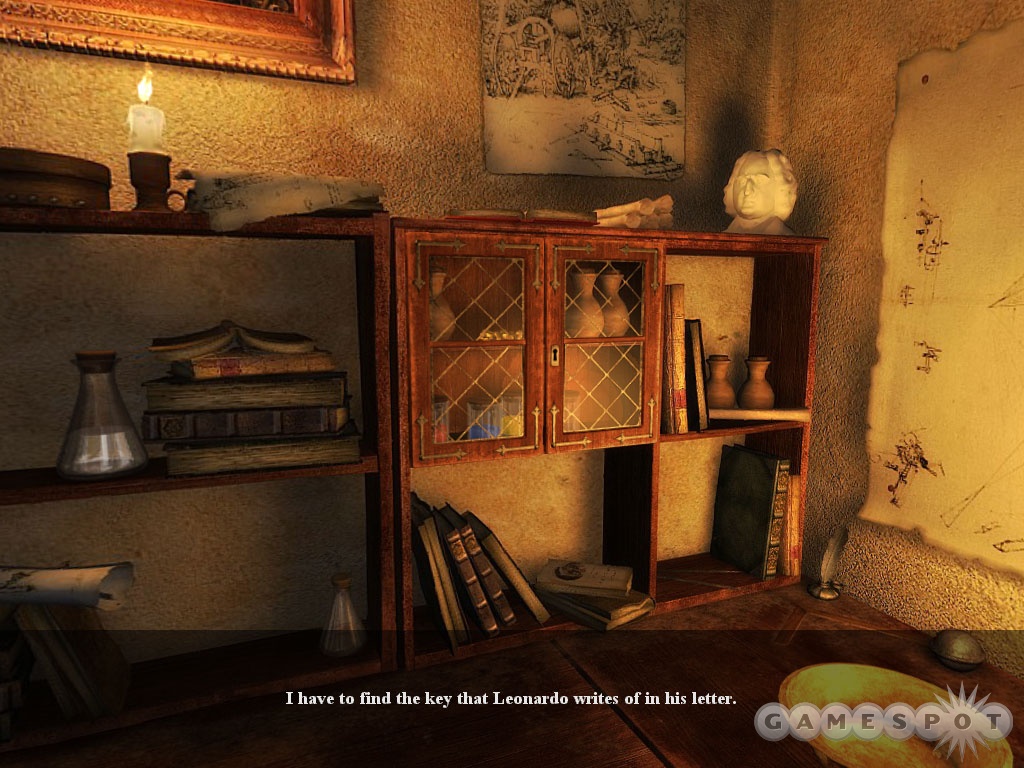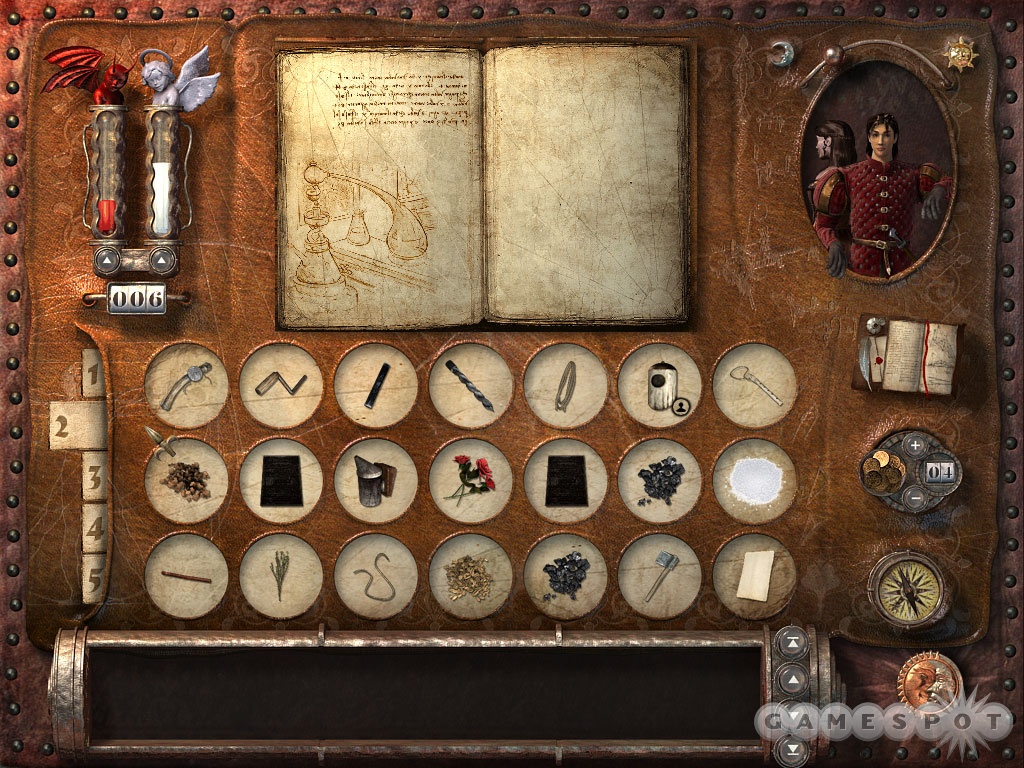Does the name Leonardo mean more to you than a katana-wielding turtle? Does the mention of the name Da Vinci conjure up more than an image of Tom Hanks? If so, and if you're interested in the works of the immensely talented artist, inventor, and all-around genius known as Leonardo Da Vinci, then you might be interested in the latest adventure game from Kheops Studio. The Secrets of Da Vinci: The Forbidden Manuscript is a fictional adventure that has you searching for the lost works of the master himself. The game doesn't actually reveal any secrets about Da Vinci, so if you're looking to back up any conspiracy theories, you'll be disappointed. Beyond the name, there isn't anything remarkable about The Secrets of Da Vinci. It's a solid but standard point-and-click adventure that isn't the least bit adventurous. Despite that, it still proves satisfying enough for fans of adventure games.

The Secrets of Da Vinci takes place shortly after the death of Leonardo Da Vinci. Apparently, Leonardo willed most of his works to a friend, but there are people who, for undisclosed reasons, believe that much of the master's greatest works have yet to be discovered. You play as Valdo, a young student who is hired by a mysterious person to visit the Cloux Manor where a valuable codex containing some of Da Vinci's greatest secrets is supposedly hidden. As with all dead people in adventure games, Da Vinci keeps his valuables well hidden but leaves behind a series of cryptic clues, puzzles, and riddles for you to solve to learn his secrets. You'd think that if Da Vinci really had any profound and enlightening discoveries that he would just come out with them before he died rather than screwing with people from beyond the grave, but then if he did that there wouldn't be much of a game here.
The game takes place entirely in and around the small Cloux Manor, and by the end of the game, you'll know each and every nook and cranny of that place because you'll constantly be covering the same ground as you search for new clues, items, and puzzles. You can explore each area from a fixed standpoint, while moving your view with the mouse to interact with people and objects. The cursor is context sensitive, and it changes shape to indicate mechanisms you can interact with, items you can pick up, and areas you can move to. Usually, the important items stand out and are quite obvious, but you'll still have to do your fair share of pixel hunting.
Most of the puzzles in the game are related to fetching the right items to produce other items, unlock doors, or gather new information. There's a lot of junk you can collect in the game, from pebbles and eggs to ladders and drill bits. Every item has a use, although some are more obvious than others. Inventory management does become tiresome later in the game, though, because you have five pages of available inventory that you'll have to flip through to find the item you want to use. If you don't know which item to use, it becomes even more frustrating as you go through the trial-and-error process of searching your inventory, finding an item, trying to use it, opening your inventory again, selecting a different item, trying to use it, and so on until you finally figure it out. Thankfully, most of the puzzles are fairly intuitive, so it's usually easy to figure out what you need to do. But even when you do know what to do, it can be somewhat tedious to repeat the exact same series of clicks multiple times, as the game often requires you to do.
The puzzles themselves are pretty basic. For example, early in the game you have to get into Leonardo's study on the second floor, but the door is locked. So you go fetch a ladder and try to climb in the window, but one of the rungs breaks, so you have to go find a stick, take it to the workshop, cut it to length with a table saw, repair the ladder, and then finally climb up. There are also recipe puzzles that require you to find ingredients to create ink, perfume, and paper. The mechanical puzzles are fairly simple and include matching up gears to make a clock run, getting a waterwheel working to power a mill, and fixing a movable bridge. None of the puzzles are particularly difficult, which keeps the game moving along but also sometimes makes it feel like you're just mindlessly going through the motions. Most of the challenge in the game comes from not knowing what to do next, but that is often alleviated by using a handy journal that tells you what you need to do. The journal isn't so detailed as to provide step-by-step instructions for what to do next, but it usually provides enough information to gently nudge you in the right direction.

The nature and number of fetching tasks in The Secrets of Da Vinci mean that you'll have to backtrack often to collect items from different rooms and areas. It gets old after awhile, but at least the places you'll see look nice. Croux Manor is nicely detailed, with elaborate artwork, soft lighting, and rustic décor that make the place look good. While most of the backgrounds are completely static, portions of the environment will become animated as you interact with them. This animation is a bit rough in spots, but for the most part it looks fine. Some of the fixed standpoints used in the game give you odd views on the area you're trying to investigate, which can be annoying at first, but you'll quickly get used to it. The sounds around the manor are pleasant, as well, consisting mostly of chirping birds and other ambient noises. There's a bit of music that softly plays whenever you solve a puzzle or discover a clue, but it fades out quickly, and you're left in relative silence again. The voice work isn't going to win this game any awards, but it's passable, and the dialogue is kept to a minimum, anyway.
The Secrets of Da Vinci will keep you occupied for 12 hours or so, depending on your proclivity for adventure games. But for its not-quite budget price, this game isn't good enough to make it wholly recommendable. The puzzles are challenging without being frustrating, and the presentation is easy on the eyes and ears, which makes this a fair choice for established fans of adventure games and newcomers alike. But, the game does get tedious at times, and it doesn't do anything interesting to elaborate on a very generic design.